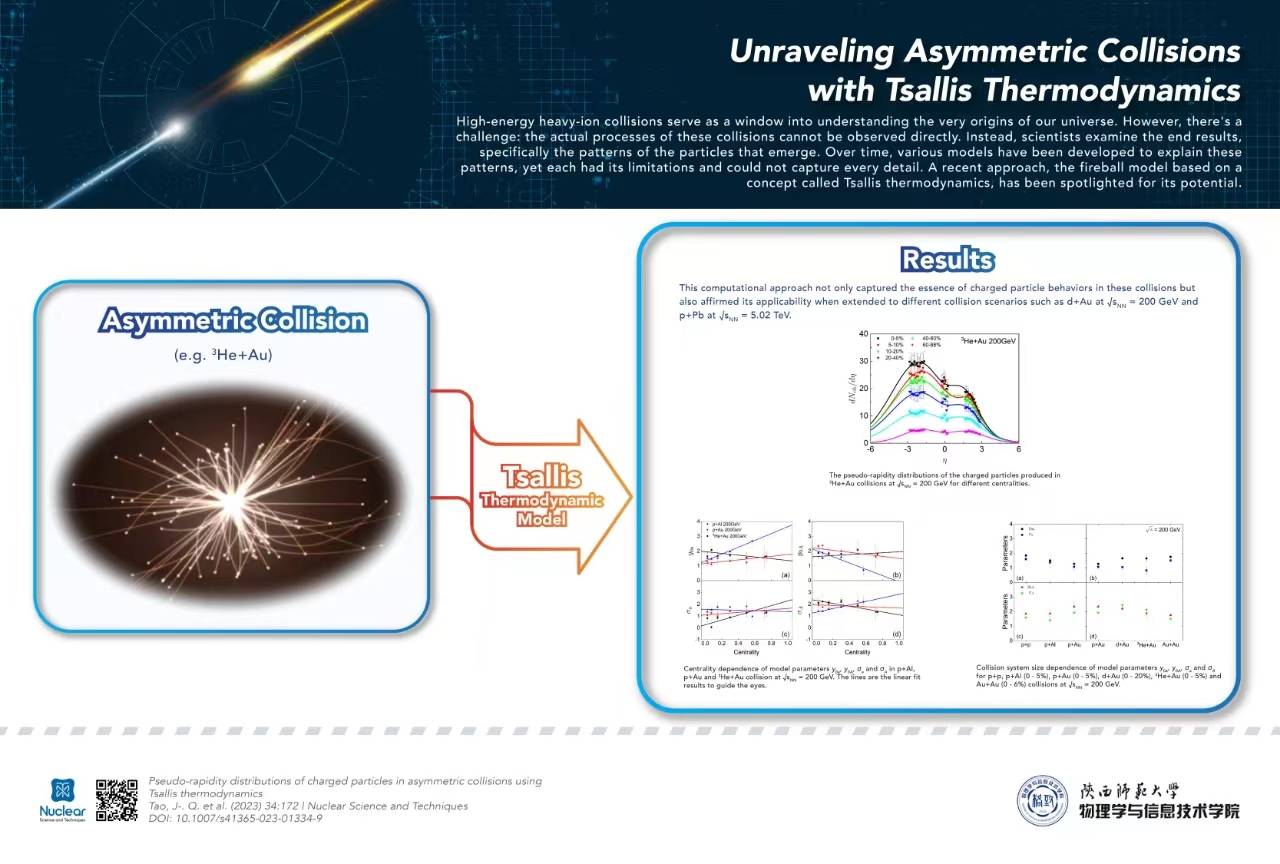Article title: Pseudo-rapidity distributions of charged particles in asymmetric collisions using Tsallis thermodynamics
DOI: 10.1007/s41365-023-01334-9
One sentence summary:
This research introduces a significant thermodynamic model to decode the complex patterns of charged particles in asymmetric collisions, offering a universal tool for understanding fundamental processes in high-energy physics.
Keywords:
Tsallis thermodynamics, Fireball model, Pseudo-rapidity distribution, Heavy-ion collisions, Charged particles Tsallis
The Novelty
In analyzing collisions like Au and 3He+Au at √sNN = 200 GeV, this research uncovered the robust capability of fireball model (based on Tsallis thermodynamics) to forecast and interpret patterns of particles emerging fro the collisions. This computational approach not only captured the essence of charged particle behaviors in these collisions but also affirmed its applicability when extended to different collision scenarios such as d+Au at √sNN = 200 GeV and p+Pb at √sNN = 5.02 TeV. The findings offer a promising and universal framework for understanding a variety of collision systems. As its versatility and accuracy become evident, the future might see this model as a cornerstone in deciphering more complex collision dynamics.
The Background
High-energy heavy-ion collisions serve as a window into understanding the very origins of our universe. In simple terms, these are like powerful fireworks on a microscopic scale. However, there's a challenge: the actual processes of these collisions cannot be observed directly. Instead, scientists examine the end results, specifically the patterns of the particles that emerge. Over time, various models have been developed to explain these patterns, yet each had its limitations and could not capture every detail. A recent approach, the fireball model based on a concept called Tsallis thermodynamics, has been spotlighted for its potential. This paper's thesis is to further validate this fireball model, especially for a kind of collision where the two colliding entities are not identical, termed as "asymmetric" collisions. By doing so, the researchers aim to provide a more comprehensive tool that can describe these collision aftermaths better than ever before, filling the gaps left by prior models.
The SDG impact
Advancements in fundamental research play a pivotal role in shaping the future of education and innovation on a global scale. With a rapidly changing global landscape, advancing our grasp on fundamental sciences becomes ever more critical. This research is contributing directly to the SDG of Quality Education (UNSDG 4) for highlighting the importance of advanced learning and the role of innovative scientific research. Additionally, by pushing the boundaries of scientific discovery, this research aligns with Industry, Innovation, and Infrastructure (UNSDG 9).
Graphical Abstract


